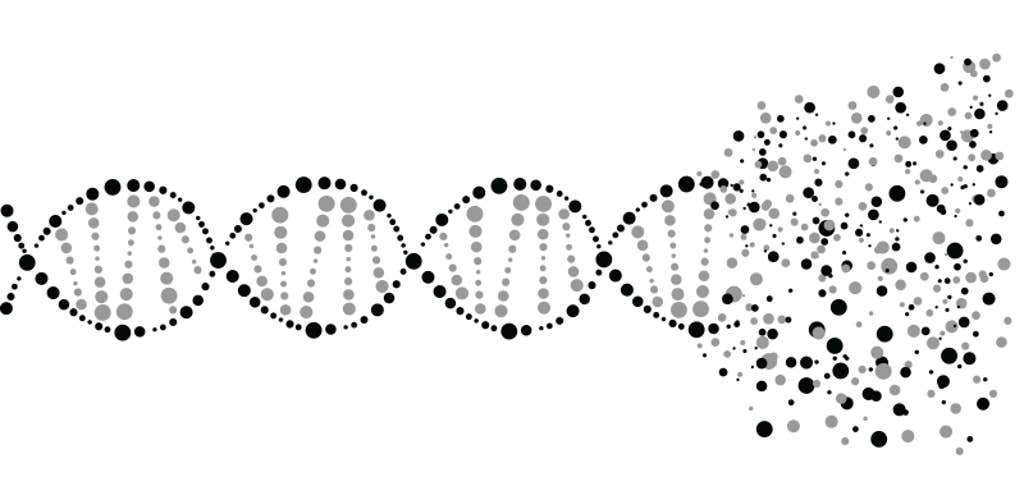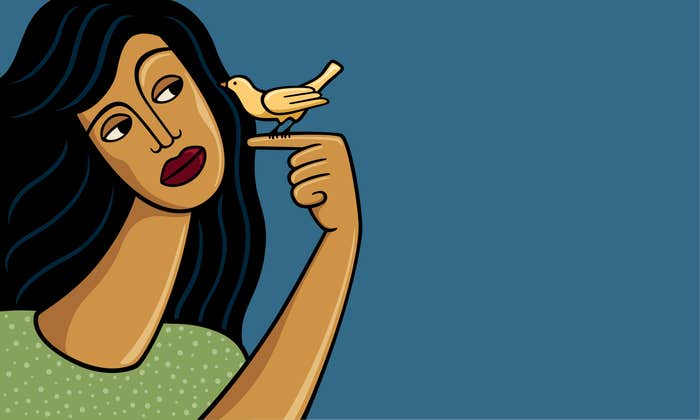The irony seemed a bit heavy-handed, frankly. Just as I was about to publish a book called How Life Works, my own life stopped working as it should.
Following a series of urinary tract infections, a biopsy confirmed that I have prostate cancer. Sometimes this kind of cancer just sits there and does very little, in which case regular monitoring of blood PSA levels is adequate to identify any danger. My cancer isn’t like that. It is moderately aggressive and classified as high-risk, which means that a radical intervention—in my case, surgical removal of the prostate—is needed to keep me alive.
Whether that works only time will tell, though the prognosis is hopeful. After the diagnosis but before learning from a PET scan that the cancer appears not to have spread, I was particularly mindful of life’s finiteness. Those uncertain days, lit by the golden glow of summer’s late dwindling, had a charged intensity. To my surprise, I found solace in what writing How Life Works had led me to conclude about the nature of life itself. I am now more amazed by life than ever. Like my late friend Oliver Sacks, my predominant feeling was one of gratitude. Like Oliver, I realized that “being a sentient being on this beautiful planet”—for however long that might continue—“has been an enormous privilege and adventure.”
Our atoms are no different to those in rocks and air, and yet here we are.
I don’t suppose there can be many biologists who, if they delve deeply into the molecular and cell processes that sustain life, have not been astonished that life is possible at all. In How Life Works, I open the black box between genes and people, navigating the byzantine details of transcription factors and gene regulation, cell communications and tissue patterning. These are places popular accounts seldom go—and for good reason.
Once we let go—as I believe modern biology shows we must—of the comforting fiction that all this complexity is orchestrated by some master plan in the genetic sequence in our chromosomes, as if simply reading out a recipe, then we have to wonder where the organization comes from. For complex organisms like us, control is decentralized and distributed across many levels, each of them largely insulated from the finer details of what happens on the levels below.
It’s simply bewildering that insensate matter—atoms and molecules, the same stuff from which rocks and air and stars are made—can do this. It is our remarkable good fortune to inhabit such a creative, generative universe, able for a time to spin up little centers of organization that awaken to their own existence.
Price of Unpredictability
The idea that our DNA is a “blueprint” or “operating manual” is still popular with agencies such as the National Human Genome Research Institute. But it’s an attempt to explain how life works that’s out of step with modern biological research and threatens to obscure and even to extinguish the real wonder of the answer.
Life is not about reading out a blueprint, it’s about creating flexible rules and resources from which diverse forms might emerge. We all began as a lone fertilized egg: a zygote. That cell made us us not just by replicating into something like 28 to 36 trillion cells but by those cells specializing into different tissue types, each with an identical genome but with different suits of genes activated or suppressed. This rich community of cells becomes an organism in a process of constant negotiation and collaboration.
The diversity of cells, as well as the ability of each individual cell to respond to signals from outside (from other cells and the environment), arises through the process called gene regulation: the control of which genes are active, and which are not. When a gene is active, the information encoded in the sequences of DNA building blocks it contains may be read by enzymes and transcribed into a “messenger” RNA molecule, which in turn acts as a template for making a protein. It is generally thought that the complexity of the human body derives not from an abundance of genes—we have far fewer than was thought in the early 1990s, when the Human Genome Project began, approximately 19,000. (That’s barely half as many as a banana.) Rather, this complexity stems from the intricacies with which our genes are regulated.

How gene regulation occurs is one of the hardest and most complicated problems for how (human) life works. We now know that it’s not simply a matter of our genes having switches that can be flipped on or off by other biomolecules like the switching of transistors in the digital circuitry of a silicon chip. Rather, the logic of gene regulation is fuzzy and collective, involving whole committees of molecules that are none too fussy about who is present or who talks to whom.
Some of the key members of those committees are RNA molecules—not the messenger RNA used to make proteins, but so-called noncoding (nc) RNA. All manner of ncRNAs are now known, some long and some weirdly short and therefore encoding rather little information. With a fair degree of reluctance, biologists have had to admit that some genes aren’t there to make proteins at all but to encode these functional RNA molecules.
At first it was thought that such ncRNA genes were mere oddities. But just as the number of protein-coding genes thought to be contained in the human genome decreased over the past three decades or so, so the number of ncRNA genes has grown steadily, to the point where they currently outnumber protein-coding genes. In other words, it seems that the human genome is not even mostly about encoding proteins. This is a remarkable change in the molecular basis of human biology—some might even see it as comparable to our realization that the amount of dark matter in the universe greatly exceeds that of normal matter.
The fuzziness in the mechanisms of gene regulation is reflected in an unforeseen casualness in the way many of the molecules involved interact with one another. For many years, the conventional view in molecular biology was that life’s molecules—especially proteins—are exquisitely choosy in their unions with one another and with other molecules, fitting together like a lock and key. That, it seemed, was the only way to keep order amidst the wild throng of the cell.
But it’s now understood that many proteins, especially in large, complex animals like us, don’t have the well-defined shapes needed for such precise “molecular recognition.” The molecular chains of which they are comprised don’t necessarily fold up into compact, well-defined forms, but have many segments that stay loose and floppy—“disordered.” This leaves the proteins rather indiscriminately sticky toward one another. That is especially true of those proteins that sit at the hubs of the cell’s interaction networks—the molecules that unite one chain of conversations to another.
I don’t feel my cancer is a malicious form of life that’s taken root inside me.
Any of these shifts in narrative alone—the importance of gene regulation, the significance of noncoding RNA, structural disorder in proteins, promiscuity of molecular interactions—might be surprising, even perplexing. But taken together, they can be seen to create a new sort of “cell logic” that permits our cells great versatility and adaptability, an ability to respond to one another and to find collective solutions to the noisiness and unpredictability of life at the molecular and cellular scale. This is what makes us robust. It is, indeed, surely what makes us possible at all.
A prescription written into a genome would be too brittle a design for complex, multicellular creatures who occupy such unpredictable and diverse environments. We can see the genes “letting go” as life’s complexity deepens; eukaryotes, and especially metazoans (complex animals), have more of these fuzzy committee-style unions, more protein disorder, more regulatory RNA, than bacteria and other prokaryotes. To risk an anthropomorphism, evolution chose to work this way.
But the open-ended nature of the interactions between our molecules and cells has its downside. It means that life can lurch in directions that don’t serve the whole organism so well. The price of keeping the destinations open is that not all of them are desirable.
One example is the way that floppy proteins are apt to fold up and clump together into aggregates that can be toxic to cells. This is particularly common in neurons and can lead to neurodegenerative conditions such as Alzheimer’s and Huntington’s diseases.
Another of the consequences of life’s fuzzy rules is cancer. The dysregulated state of cancer cells is not so much a malfunction as an alternative way for cells to be, much as bad weather is something the weather system produces. By the time we reach adulthood, many of us are likely to have some cells in this state: Many, perhaps most, men will die with cancer in the prostate and will never know it. It is as normal to have cancer cells—if not clinical cancer—as to have wrinkled skin or graying hair. You can’t be an organism made from many cells that replicate and self-regulate without incurring that risk.
To my surprise, I found solace. I am now more amazed by life than ever.
Yet the cancerous state of cells is not, as once thought, a condition of sheer anarchy, but has its own plan and logic. The fuzzy rules still apply; they just produce a different result. Cancer cells aren’t selfish individualists; rather, tumors typically have complex structures akin to those of normal development. They contain a variety of cell types that can collaborate with—one could say exploit—normal healthy cells to, for example, grow a blood supply. Tumor growth is not a featureless orgy of replication but a kind of deranged development. The derangement can of course kill us.
But once we recognize that cancer is another way for cells to be, we can imagine treatment strategies beyond the desperate ones of trying to kill it first by cutting it out of bodies, poisoning it with chemotherapy, or burning it with radiation. One such approach, called differentiation therapy, aims to coax cancer cells into a non-malignant state, just as we can now reprogram our own healthy cells. Another, called immunotherapy, seeks to boost the ability of our immune system to deal with the rogue cells.
Immunotherapy is already proving valuable for treating some cancers, but mine will need to be stopped the old-fashioned way, assisted now by robotics: cutting it out. I don’t, however, feel that my cancer is some awful stroke of bad luck, nor some malicious form of life that has taken root inside me. It is part of how life’s game must be played. While cancer is not something we are powerless to influence, it’s the price we pay for being a complex, multicellular living being.
We Are Whirlpools of Meaning
Peering in granular detail into the molecular workings of our cells and bodies reveals a new way of thinking about life. But the very ornateness of the baroque schemes through which life sustains itself points to something larger.
Once we let go of the idea that we are nothing but machines made by genes to perpetuate their existence, what replaces that barren picture is extraordinary, humbling, but also, comforting. Genes must relinquish control to higher levels of organization that provide the cells and the body’s ability to adapt. A cell’s identity is established collaboratively: Tissues and organs are built by mutual negotiation. As developmental biologist Alfonso Martinez Arias has put it, “cells control genes, not the other way around.”
I would modify that statement. In principle, everything in biology can control everything else, depending on the context. I call this causal spreading. As organisms evolved increasing complexity, what causes their growth, behavior, and resilience (as well as what causes malfunctions), became spread among the different scales of the hierarchy from genes to networks of genes, from other molecules to cells and tissues. No one level has overall control. We must be able to respond at all levels, so that factors influencing whole tissues or organs can feed back to the genome and determine which genes are active and which are not.
But then what is it, if not a genomic program, that sustains this remarkable balancing act? That’s the true mystery. Our bodies, so long as they live, are astonishing feats of organization. Our atoms are no different to those in rocks and air, and yet here we are, a little knot of atoms that can walk around the planet and think about itself and others. This inspires in me, an atheist, the kind of wonder that I suspect many religious believers experience.
To many biologists, this image of life might sound whimsical (at best). That is because, strange though it may seem, most biologists do not concern themselves (or need to) with what life is; they are busy enough trying to figure out how life as we already know it actually works. Life is not, for them, some abstract concept, but rather, the stuff growing in their petri dishes, or moving under their microscope or across the savannah. Yet what in the end keeps all these balls in the air? What manner of phenomenon are we dealing with?
It is our remarkable good fortune to inhabit such a creative universe.
For we are not merely a knot of atoms. The atoms that make us are constantly being exchanged with those in the environment, replaced almost entirely every several years. Unlike a lump of rock, in which many of the same atoms have sat there locked into a crystal lattice since before the dinosaurs, we are matter in flux. What exactly is it that stays steady (if not constant) over our lives?
The best we can currently say is that we—each of us as individuals—are self-sustaining patterns that become imposed on matter. There’s no shortage of non-living analogues of structures that are temporarily sustained and organized while matter and energy flow through them: hurricanes and whirlwinds, say. We too are spinning patterns of organization. What makes living things different is that we can modify our behavior and environment to sustain the pattern. What’s more, we can generate new structures and pass on in molecular form a memory that shapes them—the genome, which becomes modified and shaped during evolution by its interaction with its environment. But our DNA is not alive, nor can it somehow “give” life to the whole. Rather, it provides resources and possibilities: no more and no less. Life is the spinning itself, while it lasts.
Our patterns interact and exchange: There is information flow between them. Once we cease clinging to our materiality, as if we were hewn from rock, we can see how there is a genuine spreading-out of the pattern and organization that make us. Some of the patterns in my brain have been set in place by the whirlwinds of meaning who are my family. We are leaky patterns, imprinting onto one another. When I am moved to tears by a Bach prelude, it is not because of some mysterious power of the acoustic vibrations; it is, it can only be, because there is some Bachness preserved in that pattern, some Bach-meaning encoded in the matter of the world.
For what truly distinguishes living organisms as self-organized knots of energy and matter, spinning in the universe, is that they acquire meaning and purpose. Those can often seem like taboo words to many biologists because they convey teleological and even theological connotations. But this is not merely a mistake; it is a fundamental misunderstanding of what life is, of why we are not “nothing but atoms.” Not only can meaning and purpose be scientific concepts, but they need to become that if we are to get to the core of what life is.
It is unexceptional, or should be, to say that purpose exists in life. It is also conventional, however, to say that purpose is a mere appearance generated by the tendency of genes to find ways of replicating and multiplying. But the fact that purpose can be dissected into molecules and neurons signifies nothing. So can love, if you try hard enough. Yet still we love.
The physicist Steven Weinberg famously said that the more we understand the universe, “the more it also seems pointless”: It has no meaning. But that is to misunderstand what meaning is: an attribute produced by living things, not one inscribed in the laws of physics. It is no more useful to say that the more we understand the universe, the more humorless it seems. (Some might wryly suspect the opposite, I suppose.) These are not attributes we should seek in the cosmos at large.
Rather than trying to dissipate life’s purpose and meaning across the cosmos, we can and must make a science of it. It starts with salience: There are things organisms notice and respond to, generally because doing so is beneficial (or expected to be), and other things that they can sense but which they ignore. (The choice of what to sense, meanwhile, is largely made in the process of evolution itself.) They know what matters, by both hard-wiring and experience. By attending to and differentiating what is around them, they create meaning.
Meaning and purpose supply the basis of agency: the capacity of living things to act and to change their surroundings to their own benefit. This is perhaps what truly distinguishes what is alive (or is constructed by things that are alive) from what is not. Biology needs to know about transcription factors and cell signaling pathways and the dynamical steady states of cells, but what makes all this a science of life is the existence of agency—and until it has a good theoretical and conceptual grasp of that elusive property, it will not quite be a true science of life.
So we are whirlpools of meaning, and it is both our privilege and our fate that part of our own meaning derives from that of others. We care about one another, and that is what makes it so unutterably sad for us when that cherished other’s spinning ceases, as all self-organized structures do, like Philip Pullman’s characters in the His Dark Materials trilogy dissolving into Dust.
As I prepare for surgery, I have every intention of spinning for a good number of years to come. I cannot know how many—which of us does? Yet to be a part of the universe that gets to spin for a time, and to create a unique pocket of meaning: That is indeed something to be grateful for. ![]()
Lead image: fran_kie / Shutterstock




























